Abstract
1. Finger blood flow was estimated, by strain-gauge plethysmography, before and during a 1 hr immersion in ice water, on twenty-five men throughout a year at Wilkes, Antarctica. A total of 121 satisfactory immersions were made.
2. Blood flow before and during immersion decreased significantly in the colder months of the year, and the increase caused by cold-induced vasodilatation (CIVD) became less as the year progressed. The time of onset, blood flow at onset, and frequency of the cycles of CIVD showed no significant relation to the coldness of the weather (as measured by mean monthly wind chill) or the time in months. Comparisons of blood flow before and after five field trips (average duration 42 days), on which cold exposure was more severe than at Wilkes station, gave similar results.
3. The results suggest that vasoconstrictor tone increased. This interpretation agrees with previous work on general acclimatization in Antarctica, but contrasts with work elsewhere on local acclimatization of the hands.
Full text
PDF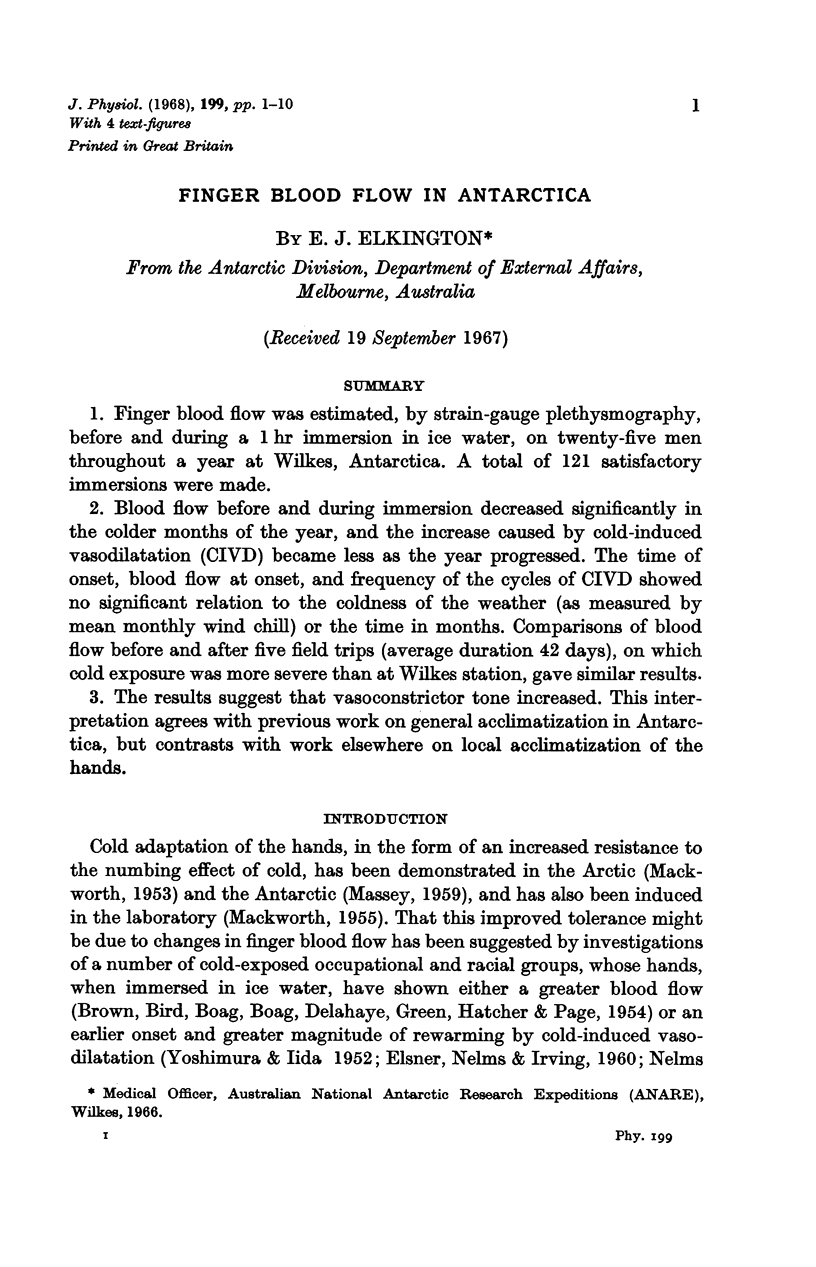

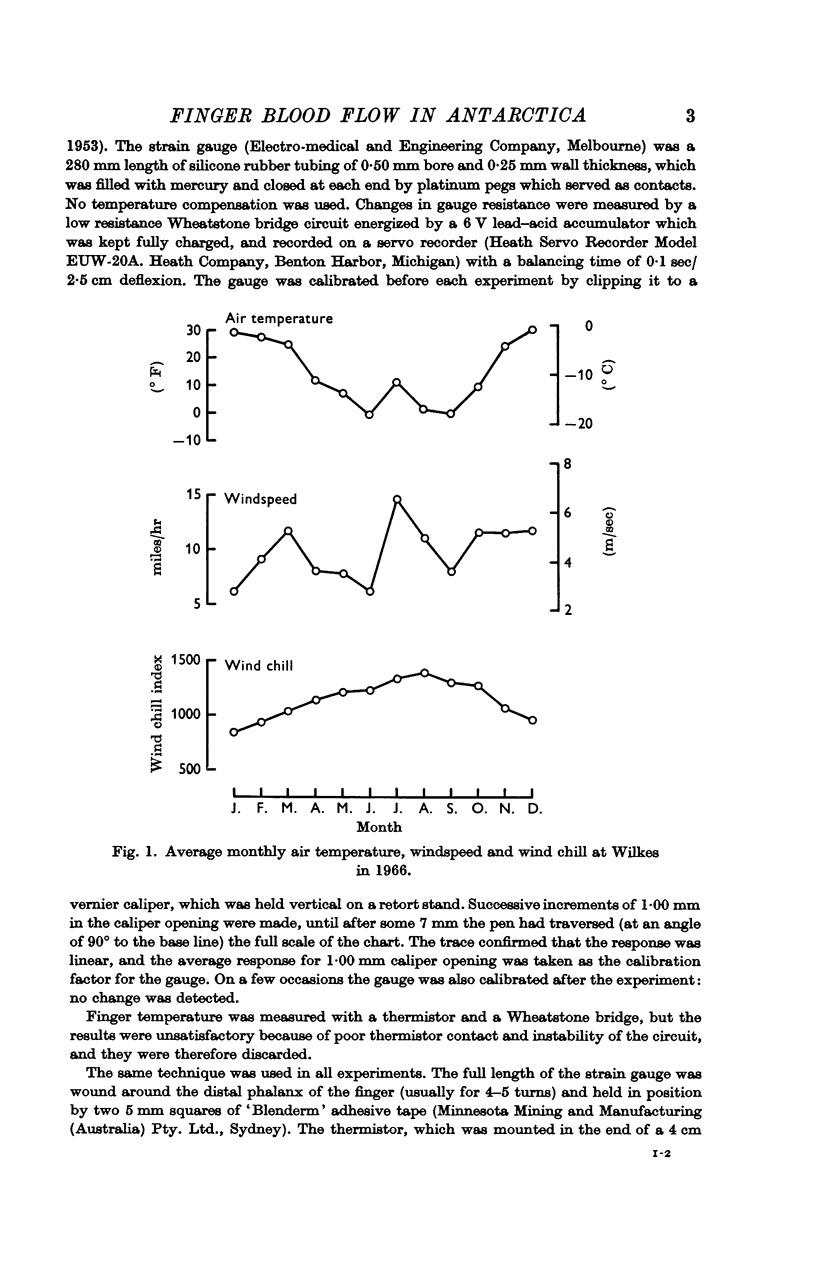
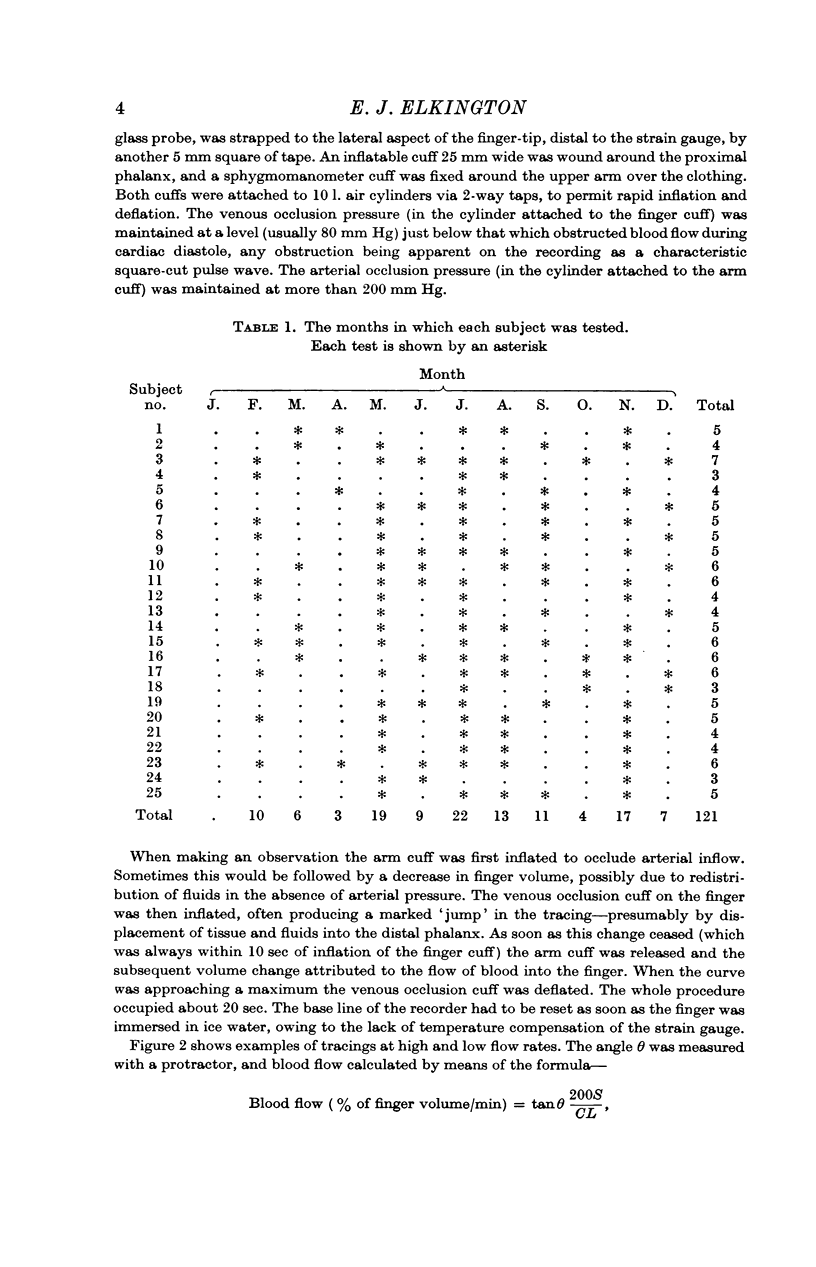
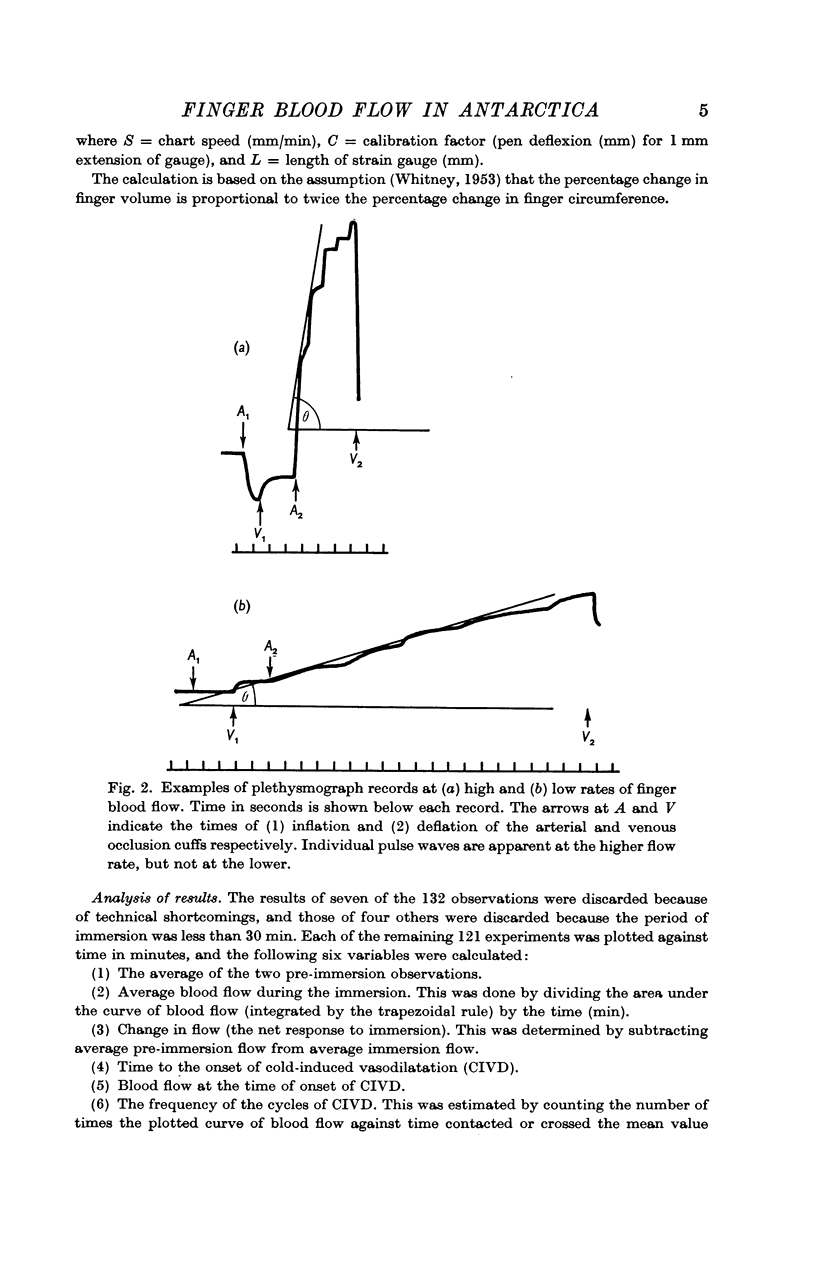
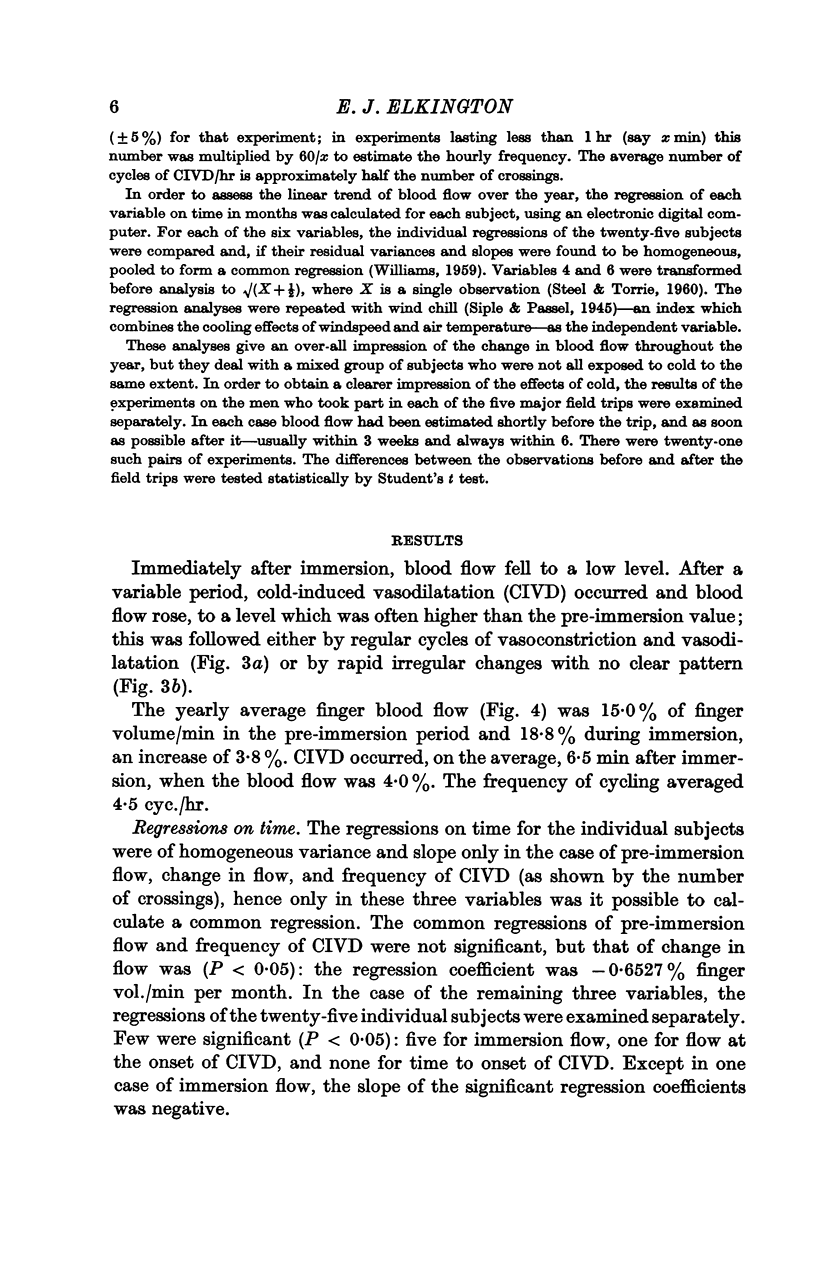
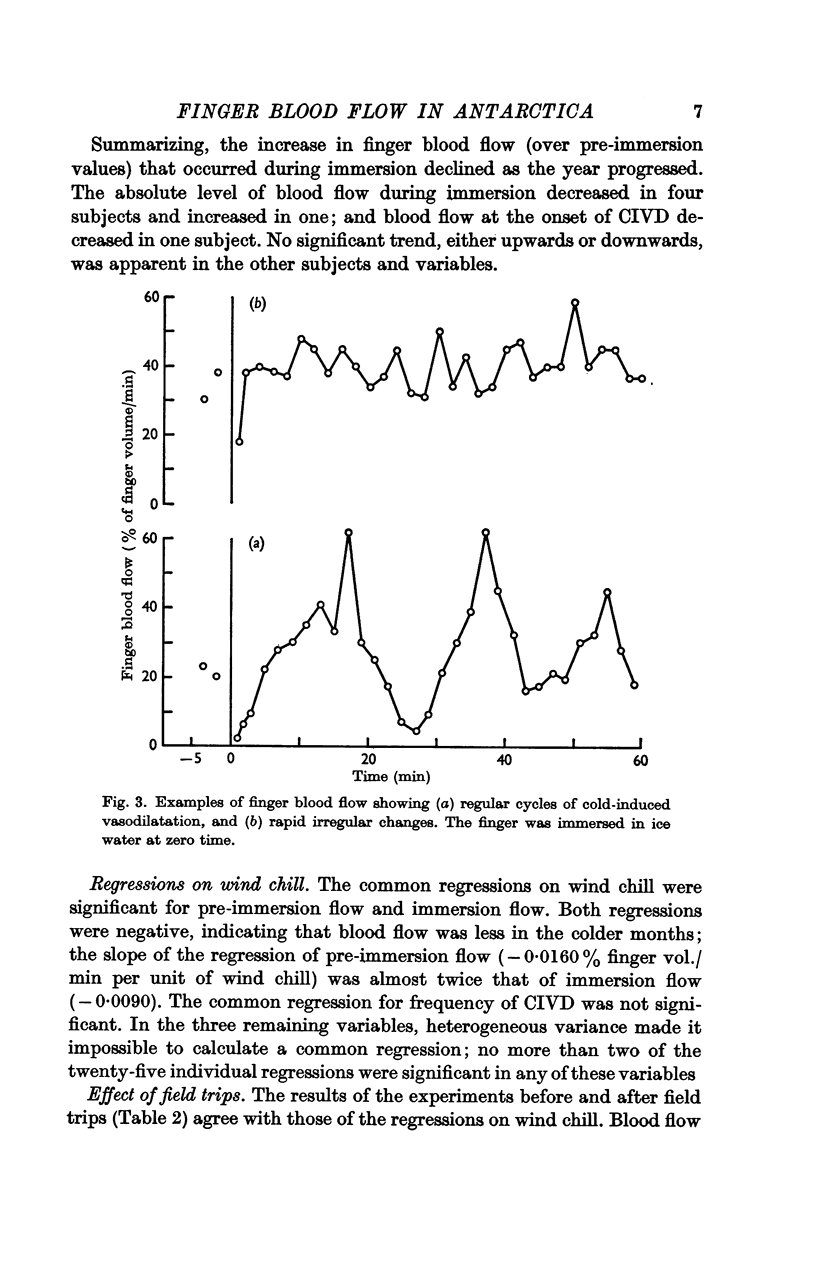

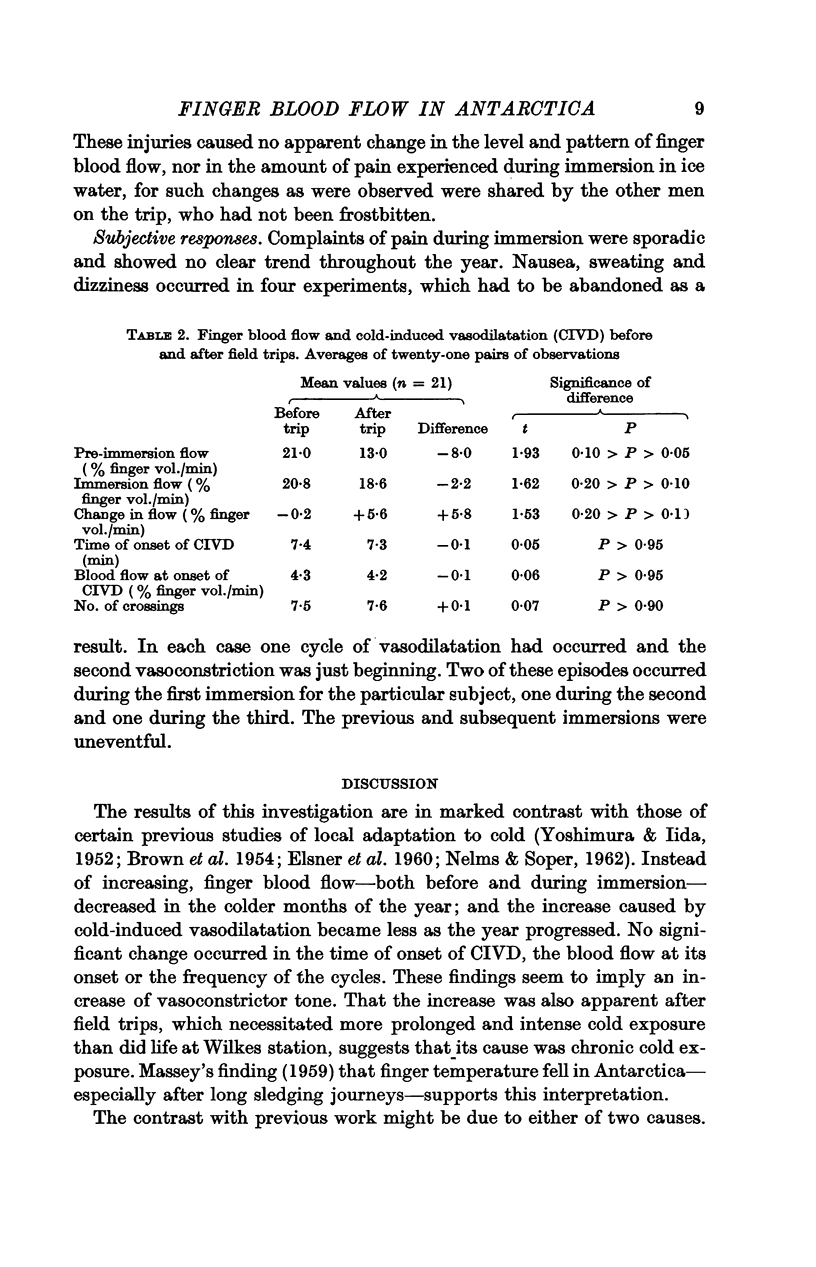
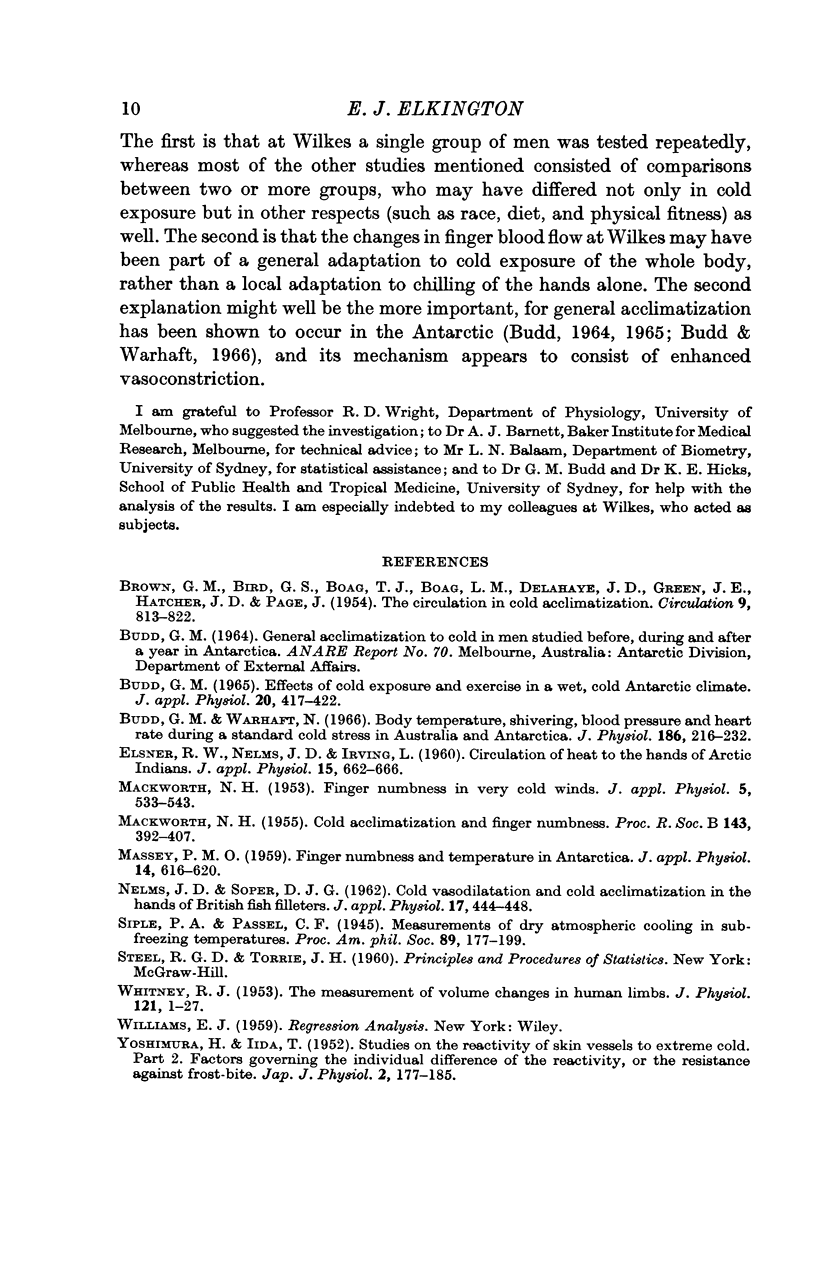
Selected References
These references are in PubMed. This may not be the complete list of references from this article.
- BROWN G. M., BIRD G. S., BOAG T. J., HOAG L. M., DELAHAYE J. D., GREEN J. E., HATCHER J. D., PAGE J. The circulation in cold acclimatization. Circulation. 1954 Jun;9(6):813–822. doi: 10.1161/01.cir.9.6.813. [DOI] [PubMed] [Google Scholar]
- Budd G. M. Effects of cold exposure and exercise in a wet, cold antarctic climate. J Appl Physiol. 1965 May;20(3):417–422. doi: 10.1152/jappl.1965.20.3.417. [DOI] [PubMed] [Google Scholar]
- Budd G. M., Warhaft N. Body temperature, shivering, blood pressure and heart rate during a standard cold stress in Australia and Antarctica. J Physiol. 1966 Sep;186(1):216–232. doi: 10.1113/jphysiol.1966.sp008030. [DOI] [PMC free article] [PubMed] [Google Scholar]
- ELSNER R. W., NELMS J. D., IRVING L. Circulation of heart to the hands of Arctic Indians. J Appl Physiol. 1960 Jul;15:662–666. doi: 10.1152/jappl.1960.15.4.662. [DOI] [PubMed] [Google Scholar]
- MACKWORTH N. H. Cold acclimatization and finger numbness. Proc R Soc Lond B Biol Sci. 1955 Mar 15;143(912):392–407. doi: 10.1098/rspb.1955.0019. [DOI] [PubMed] [Google Scholar]
- MACKWORTH N. H. Finger numbness in very cold winds. J Appl Physiol. 1953 Mar;5(9):533–543. doi: 10.1152/jappl.1953.5.9.533. [DOI] [PubMed] [Google Scholar]
- NELMS J. D., SOPER D. J. Cold vasodilatation and cold acclimatization in the hands of British fish filleters. J Appl Physiol. 1962 May;17:444–448. doi: 10.1152/jappl.1962.17.3.444. [DOI] [PubMed] [Google Scholar]
- WHITNEY R. J. The measurement of volume changes in human limbs. J Physiol. 1953 Jul;121(1):1–27. doi: 10.1113/jphysiol.1953.sp004926. [DOI] [PMC free article] [PubMed] [Google Scholar]
- YOSHIMURA H., IIDA T. Studies on the reactivity of skin vessels to extreme cold II. Factors governing the individual difference of the reactivity, or the resistance against frostbite. Jpn J Physiol. 1952 Feb;2(3):177–185. doi: 10.2170/jjphysiol.2.177. [DOI] [PubMed] [Google Scholar]


